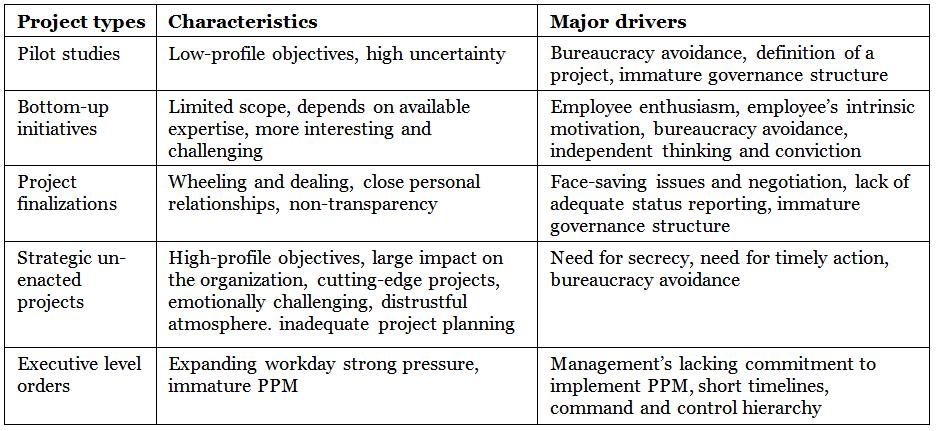|
From the IT governance point of view, one central project portfolio management (PPM) task is to ensure that official projects draw upon assigned human resources. However, a common phenomenon is that resources thought to be available often turn out to be actually unavailable. Previous research indicates that numerous unofficial initiatives, also referred to as un-enacted projects, are a typical cause of this observation. Un-enacted projects are those projects that have not been officially evaluated but do exist although they are not known to or are included in a company’s project portfolio. The result is that unofficial initiatives compete for scarce resources. Despite these resource issues, previous research has barely investigated un-enacted projects. In a recent research study we investigated the major drivers of the occurrence of un-enacted projects and their specific characteristics. By building on four in-depth case studies across four industries, we found that there is great variety in respect of (a) the type of un-enacted projects, (b) the reasons for them being triggered in organizations, and (c) their characteristics, all of which are summarized in the following categorization framework. Different Profiles of Un-enacted Projects On the basis of our findings, we derived several implications for PPM and provide suggestions on how to deal with un-enacted projects. The first implication concerns pilot studies. In order to resolve this governance problem, we suggest including pilot studies as a distinct type of project in the PPM process. Furthermore, our study’s findings suggest that motivation plays an important role in the context of un-enacted projects. Another major implication is that transparency should be part of PPM. The fourth implication concerns strategic un-enacted projects. In order to resolve the challenges that such projects present, organizations should set up a separate project portfolio dedicated to high-profile, strategic projects. The fifth major implication concerns executive level orders. In order to overcome this type of un-enacted project and to advance PPM, the management needs to empower the PPM. A credible PPM process needs to be introduced and the management also needs to adhere to it. A final implication is that this study’s empirical evidence suggests that resource management is a key determinant of successful PPM. With our study’s results, the academic discourse on the concept of un-enacted projects is advanced, while specific advice on how to deal with each type is given to practitioners in terms of PPM implications.
The research results have recently been accepted for publication: Buchwald, A. and Urbach, N. (2012) Exploring the Role of Un-Enacted Projects in IT Project Portfolio Management, Proceedings of the 33rd International Conference on Information Systems (ICIS 2012), December 16-19, Orlando, Florida, USA. (Link)
1 Comment
|
Archives
December 2015
Categories
All
|

 RSS Feed
RSS Feed